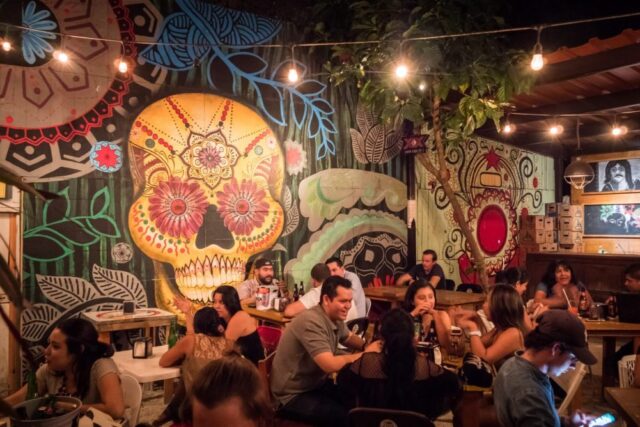Gluten-free travel in Mexico is quickly becoming a big deal, with big chains such as Chili’s, El Pollo Loco and Olive Garden offering gluten-free menus and menus that are entirely gluten-free. However, you must be careful when choosing a resort to stay at in Mexico, for safety reasons.
Mexico is a country with a huge variety of foods, and it is very easy to find a restaurant or food stall that caters to your specific dietary needs. This guide is designed to help you find the right things to eat and drink (or not eat) in Mexico, before you jet off to the country.
If you haven’t already, it’s high time to start paying attention to issues that affect gluten-free travelers. With a few simple steps, you can avoid much of the hassles that come with traveling to Mexico–and you’ll be better informed about the risks you run.
After almost eight years in Asia, I was glad to be back in Oaxaca, where I could understand the native language and eat a cuisine that seemed to be mainly corn-based and gluten-free.
What I didn’t know was that certain Mexican dishes use wheat or bread as thickeners, as do sauces like salsa Inglesa (basically Worcestershire sauce) and Maggi sauces, which nearly usually include wheat. Even though I explained my celiac requirements in Spanish,
I became unwell since the questions were not detailed enough. The response was negative when I inquired whether a mole sauce was thickened with wheat or flour. I’d feel ill, only to find out afterwards that it was because the soup had been thickened with bread. “But you didn’t ask for bread!” the sellers replied when questioned. As a result, there was a need for a gluten-free guide to Mexico, as well as a suitably comprehensive card to ensure that no one else got ill.
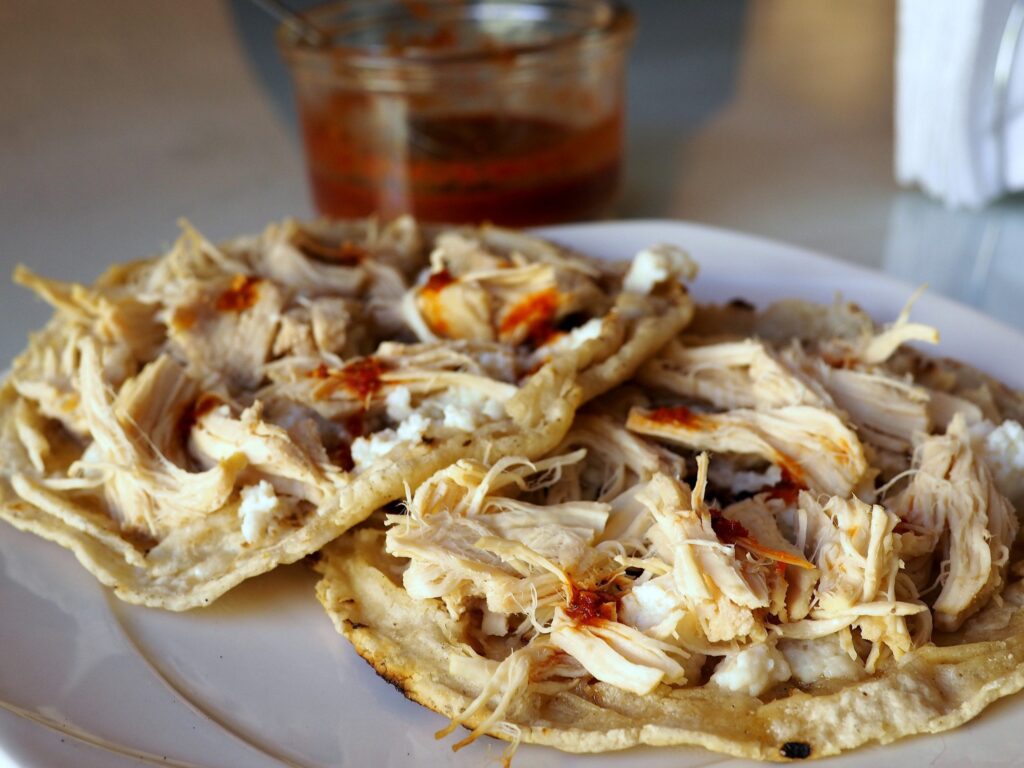
Don’t get me wrong: there are plenty of delicious corn-based snacks, homemade soups without bothersome bouillon cubes, and a plethora of tacos to be found throughout the nation. My purpose in presenting those “whoopsie” tales is to emphasize that what seems to be harmless in Mexico may not be safe for a celiac. As a consequence, my gluten-free translation card specifically mentions bread, egg bread, and any wheat-containing sauces.
This guide will help you explore the many meals available as well as provide alternatives while dining out. Snack time is ideal for celiacs since many tamales, corn tacos, and elotes (corn with cheese, mayo, chile, and lime) are gluten-free and tasty. The aim of this gluten-free guide, like any other, is to empower you to eat safely by identifying local food names and providing you with the instrument of a celiac restaurant card unique to Mexico to enable you do so with even less worry.
JUNE 13, 2024: LAST UPDATED
Do you already have a gluten-free translation card in mind? My Mexico card is available for purchase here. If you’re traveling abroad in Latin America, use the Mexico card rather than the Spanish or Catalan versions, since Latin American goods will be more properly represented on the Mexico gluten-free translation.
For Mexico and Latin America, there is a gluten-free restaurant card in Spanish
Note: The card may be purchased via Gumroad, a reputable 3rd-party store that utilizes https to ensure that your information is secure.
What makes this gluten-free Spanish card unique?
To begin, this comprehensive gluten-free restaurant card will assist you in communicating your dietary limitations and determining what is acceptable and dangerous from the menu. The card was made using celiac-specific research, cross-contamination warnings, and a double-checked translation from native speakers. The correctness of the food names and meals on the card is also double-checked with various areas of Mexico.
On my trips, I tried many different translation cards and still felt sick. I may be more sensitive than other celiacs, but even a little quantity of contaminated frying oil or wheat-thickened food sauce may make me sick for days. Not to mention the subsequent joint discomfort and inflammation.
This card stands out for the following reasons:
- It utilizes local cuisine names to indicate what to eat and what to avoid;
- Makes a point of mentioning the dangers of cross-contamination;
- Celiac disease is studied by celiacs;
- Is translated by a native speaker who is acquainted with the illness and the local cuisine, and then double-checked by another translator. In the case of Mexico, the second translator is also a Mexican who suffers from celiac disease.
- Designed to fit on your phone so you can store it and take it with you when you travel.
This card differs from my general Spanish gluten-free restaurant card in that it includes names of items prevalent in Mexico and Latin America. Over and beyond Mexico, readers have used it for Peru, Bolivia, Paraguay, and other countries.
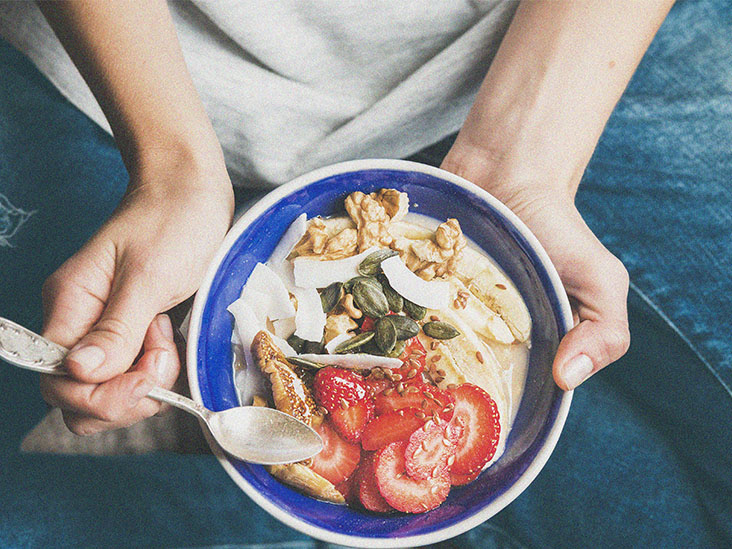
To purchase, just click the button below.
On the purchasing page, you may get an English version of the card so you know exactly what you’re getting. Thank you very much to Estela Torres Cota for her assistance on this one!
Mexican Gluten-Free Dishes, Soups, and Snacks
According to translators, the following meals are frequently wheat-free in Mexico. This isn’t a comprehensive list; nevertheless, the article is now over 5000 words long, and I can’t possibly cover everything. I wanted to make sure that some of the more popular items were featured on the menu so that you could identify them.
As with any location, whether at home or abroad, it’s essential to double-check that no wheat, bread (pan or pan de yema may be used for mole sauces), or Maggi/Knorr seasonings were used in the meals on a case-by-case basis.
It’s critical to communicate in the methods outlined below at all times.
Tacos made entirely with maize tortillas: There are a few tacos in the “unsafe” section below, although taquerias frequently have freshly pressed or pre-made corn tortillas, even if they also use full wheat tortillas. It’s critical to convey that you need 100 percent masa / maiz, since some facilities combine wheat and maize in their presses. You can obtain an endless amount of toppings here! From tacos al pastor (slow-roasted corn on a vertical spit with pineapple slices) to maciza de res, maciza de puerco, tacos de cabeza, tacos surtidos, tacos de lengua, tacos de carnitas, and SO MUCH MORE. Please be sure to show them your card or request that no seasonings containing wheat, such as salsa Inglesa, Maggi sauce, or Knorr, be used in the taco meat. Without these sauces, pastor, for example, is typically marinated in spices and chiles. However, some tacos may be prepared without the additional condiments and are grilled on the grill.
(If the taco choices seem overwhelming, Tacopedia, a comprehensive guide to Mexican cuisine, may be helpful.)
Quesadillas made with maize flour: Quesadillas are prepared from freshly pressed corn in Central Mexico and Oaxaca, similar to memelas (explained below). These are produced from flour in other countries, including the United States and Canada. Quesillo cheese, mushrooms with peppers, chicken tinga (shredded chicken with onions, tomatoes, and chilies), and flor de calabaza squash blossoms are all common fillings for quesadillas.
Empanadas produced with maize flour: similar to quesadillas, Central/Southern empanadas are not the same as those seen in North America, where they are either Argentine (little, crescent-shaped wheat pockets) or Tex-Mex (large, crescent-shaped wheat pockets) (flour tortillas). You’ll need to double-check the flour used elsewhere in Mexico.
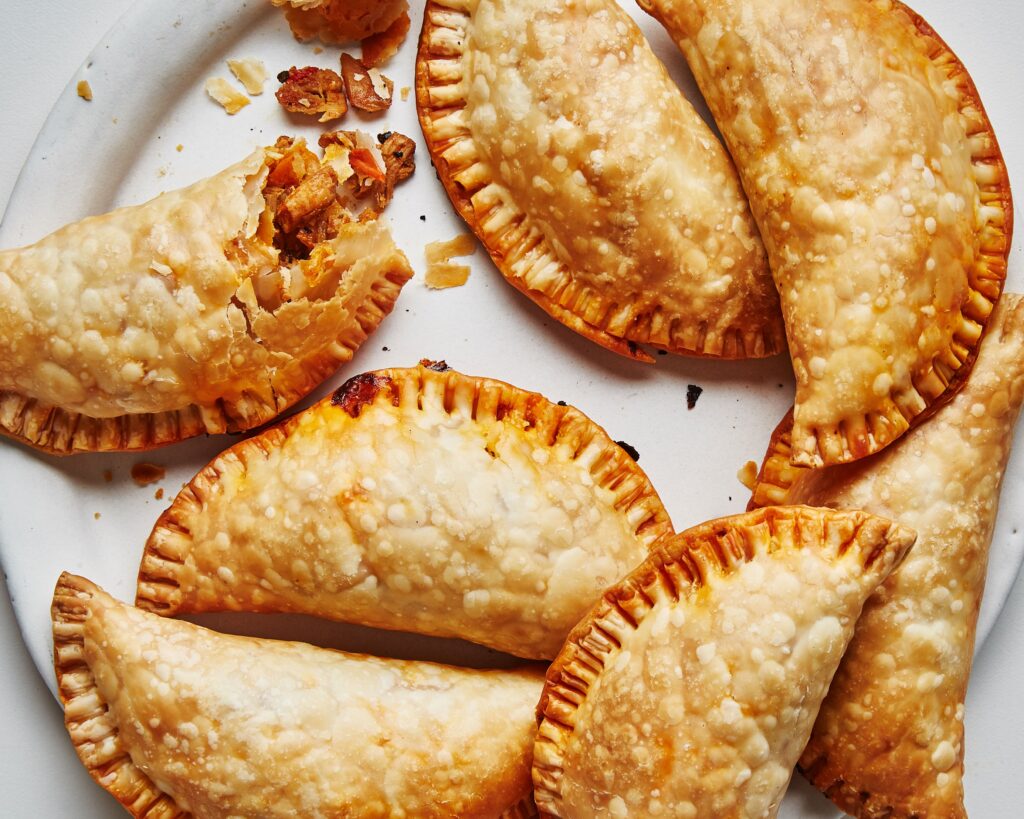
Rice, a mainstay of menu of the day lunches and many main dishes, is frequently accessible — even when not on the menu. When the side dish is something like soup with pasta in it or pasta on the side, I’ve had excellent luck asking for rice. Make sure it wasn’t cooked in bouillon cube-enhanced water, which may happen sometimes when ordering it as a side dish with seafood.
Memelas: A memela is a circular maize snack with curled ends that is roasted on a comal and is an Oaxacan speciality (a clay or metal flat surface that is powered by fire or natural gas). Memelas are nearly usually prepared to order and pressed fresh from wet masa (corn flour). Confirm that the flour is made entirely of maize, since I have yet to come across an Oaxacan vendor that uses wheat flour. These are often topped with asiento (pig fat), beans, and cheese (queso fresco or quesillo).
Tlayudas: Also from Oaxaca, these “pizzas” are really huge, crispy corn tortillas that are eaten open-faced (as seen below) or folded in half and cooked over an open fire until even crispier. Typically, they’re topped with pig fat, beans, avocado, shredded lettuce, and quesillo cheese, followed by your choice of meat. My favorite is tasajo (thinly sliced Oaxacan-style air cured beef), but you can also go with chicken, pig, or other beef cuts like arrachera. Almost all of these are gluten-free, filling, and tasty. It comes highly recommended! If you’re dining outside of Oaxaca, make sure the tortilla is entirely composed of maize.
In Oaxaca, I posed with a massive tlayuda.
Tamales: Oh, how I like tamales. The Nahuatl word tamalli, which meaning cooked cornmeal dough, is the source of the term tamal. The Aztec language, Nahuatl, was spoken as early as the 7th century, although tamales had been around throughout Mesoamerica for far longer. The tamal is thought to have originated between 8000 and 5000 BC, according to historians. It was (and still is) an ideal meal to make in big numbers, simple to transport, and had the additional benefit of extending the life of modest quantities of meat or fruit, allowing them to serve a greater number of people. The Maya even possessed a hieroglyph for the tamal, demonstrating its importance to pre-Hispanic cultures.
Most moles should be avoided while making gluten-free tamales. Breadcrumbs are often used in moles negro, rojo, coloradito, and sometimes mole amarillo. (For additional information, see this post.)
Fillings that are safe to eat include rajas (chicken with hot peppers), elote (corn), cambray (chicken with olives), flor de calabaza / quesillo (squash blossom with cheese), dulce (sweet tamale with pineapple and sweet condensed milk inside), chepil (a wonderful herb), and others. When I’ve requested for gluten-free mole verde with chicken, they’ve always said yes. Because there are so many different types of tamales in Mexico, the most essential thing is to make sure there is no pan or pan de yema in the filling.
This is why certain mole sauces aren’t allowed – BREAD.
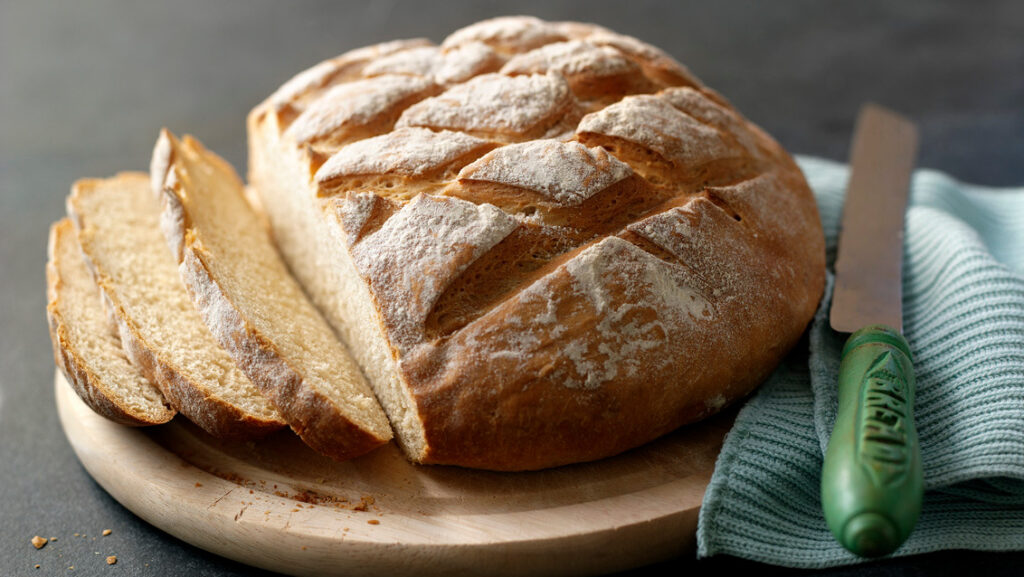
Carne Asada: Grilled beef served with rice and beans as part of a daily menu or a la carte supper menu. Make sure there’s no hidden gluten in the spices. These are seldom marinated in a wet marinade (though they may be seasoned, as in the cecina enchilada below), but they do sometimes contain the infamous Maggi for seasoning!
Cecina enchilada: Not to be confused with enchiladas, cecina enchilada is made with boneless pork that has been covered with chilies and baked. Several kinds of chile, bay leaves, garlic, oregano, and other spices are often included in the dry spice mix. Cecina is a thinly sliced, salted, partially dried sheet of meat that may be either beef or pig. The meat is neatly sliced (it’s a sight to see!) and then folded like an accordion. This piece of beef is often seen on top of tlayudas, but it is also available as carne asada, so I included it as a distinct bullet point.
Chorizo (Mexican sausage): Bread or wheat fillers seem to represent the exception rather than the norm in chorizo, as they are in many Portuguese sausages. Chorizo is often a dark crimson color because the meat is seasoned with chiles before being filled. Other choices include green chorizo seasoned with green chiles and cilantro (spoiler alert: it’s delicious). It is offered uncooked, unlike Spanish chorizo, which is usually a dried and cured sausage in a casing. This meat may be found in tacos, tlayudas, carne asada, and many more dishes. It’s fantastic.
In Mexico, chorizo is made entirely of beef and contains no wheat.
Consommé: This is a lamb or goat soup, but it’s not the thin broths you’re picturing. The soup is really very rich in Mexico since it is the liquid in which the barbacoa goat or lamb is cooked. It comes in smaller bowls since it delivers a big punch, and it’s flavored with avocado leaves, garlic, and spices. There hasn’t been a location that uses flour or thickeners because of how it’s produced. It’s always worth asking whether you’re at a restaurant rather than a barbacoa stand.

Garnachas/Huaraches: These are deep-fried maize mini-dishes topped with meat, onions, crumbled cheese, and pickled vegetables. I’m not sure why they haven’t swept North America by storm, since they’re excellent bite-sized treats. (They look like sopes or gorditas.) The most important thing here is to make sure the oil is clean.
If you ask for it without the pan de yema, you may have chocolate and corn beverages like champurrado or atole, or hot chocolate drinks like agua de chocolate (an egg bread often with the chocolate drink). There are no additional fillers in the corn and chocolate beverages (but lots of delicious spices).
Horchata is a rice milk drink prepared with rice, milk, water, and spices. It comes in a variety of flavors and styles across Mexico, and may be topped with melons and walnuts. On a hot day, it’s a refreshing choice with tacos since it’s often very sweet.
Flautas/Taquitos/Tacos Dorados: Flautas/Taquitos/Tacos Dorados are thin, crispy taco tubes topped with lettuce, fresh cheese, and often refried beans. They’re a great snack, but be wary of cross-contamination since many sellers offer them alongside flour-dredged chile rellenos. Make sure the tortillas you’re using are 100% corn.
Alambres: While the word conjures up images of dancing (or is it just me? ), alambres are a hearty dish of grilled beef or pork with onions, sweet peppers, bacon, cheese, salsa, and avocado. Of course, maize tortillas are provided on the side. Alambre is a Spanish term that meaning “wire” and has nothing to do with dance. However, it alludes to the fact that in certain areas of Mexico, meat is often grilled on a skewer! It’s like a Philly cheesesteak with tortillas instead of bread. You can’t go wrong with this! Confirm that the tortillas are corn and that the meat does not include any of the sauces listed at the top of the article.
Chapulines: Eating bugs isn’t everyone’s cup of tea, but they’re wonderful. These fried, spicy grasshoppers may be found in a variety of meals or on their own in Oaxaca. Gluten-free by nature.
Totopos: Throughout North America, they are simply referred to as tortilla chips, while in much of Mexico, they are referred to as totopos. Confirm that the chips are produced from corn tortillas and that the oil is clean.
Huitlacoche (A cool-looking grey corn fungus that tastes well in quesadillas or cooked into rice.) Because it’s a new ingredient for many people, I wanted to highlight it and emphasize that it’s gluten-free.
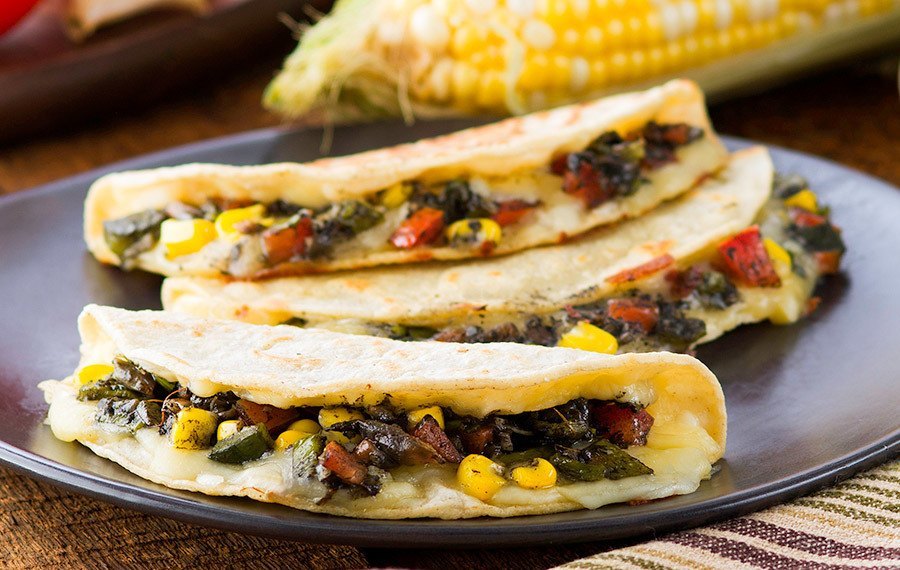
If prepared using corn tortillas, the dish is called enfrijoladas or entomatadas, and no mole sauce is used. Both of these meals are often eaten during breakfast.
Breakfast of champions: Chilaquiles! Stale tortillas refried or cooked in the oven and covered in green or red salsa — or the delectable “divorciados” option with both. They’re topped with raw onions, cheese, herbs, and occasionally crema (cream), and then topped with your choice of meat or an egg.
Jicama is a crunchy, crisp root vegetable that resembles a large turnip. It belongs to the yam bean family and was brought to Asia by the Spanish, who discovered it in Mexico. It’s often served with chile and lime, and it’s gluten-free.
Nopal: Cactus! Particularly the Opuntia cactus, often known as prickly pear cacti. In Mexico, there are hundreds of kinds of Opuntia, which are used for traditional medicine, sweets, soups, salads, and ice cream, and the de-spined pads are cooked for tacos and other meals. Some people find nopales slimy, although they are delicious when cooked with chiles and sauce.
Flor de calabaza: They are brilliant orange squash blossoms that I’ve just seen in Montreal markets – these were definitely not for sale when I was a kid! They’re not only pretty, but they’re also tasty and gluten-free.
Delicious gluten-free quesadilla with flor de calabaza and quesillo!
Chicharrón: Fried pig rinds are a popular snack item in North America, but they’ve been popular in Mexico for a long time! They’re sold in large sheets in markets, softened with tomatoes and salsa and turned into tacos, or offered as a crunchy snack in bars or from roving street sellers. Celiacs should double-check that they’re made of real pig skin rather than flour. I haven’t come across a flour version, but others have, so it’s worth asking.
Tostadas: Tostadas are thin, circular disks of maize that are baked or fried and topped with beans, cheese, guacamole, and a protein of your choosing. Corn-based confirm fried in non-contaminated oil.
These are just a handful of the numerous gluten-free cheeses made in Mexico, including queso fresco, panella, Chihuahua, Cotija, and quesillo. Processed cheeses in supermarkets and fast-food outlets are to be avoided.
Flan is a wonderful, easy-to-make dessert prepared of water, sugar, eggs, sweetened condensed milk, and milk that really fills you up! Mexico’s most popular dessert. Confirm that no flour was used to thicken the flan; nevertheless, because recipes do not call for it, traditional flan will be okay.
Fruit: Don’t miss out on the delicious fruits that Mexico has to offer! They are a wonderful refreshing snack on a hot day, and include tuna (prickly pear cactus fruit), papaya, guanabana, mamey, zapote negro/zapote, and many more.
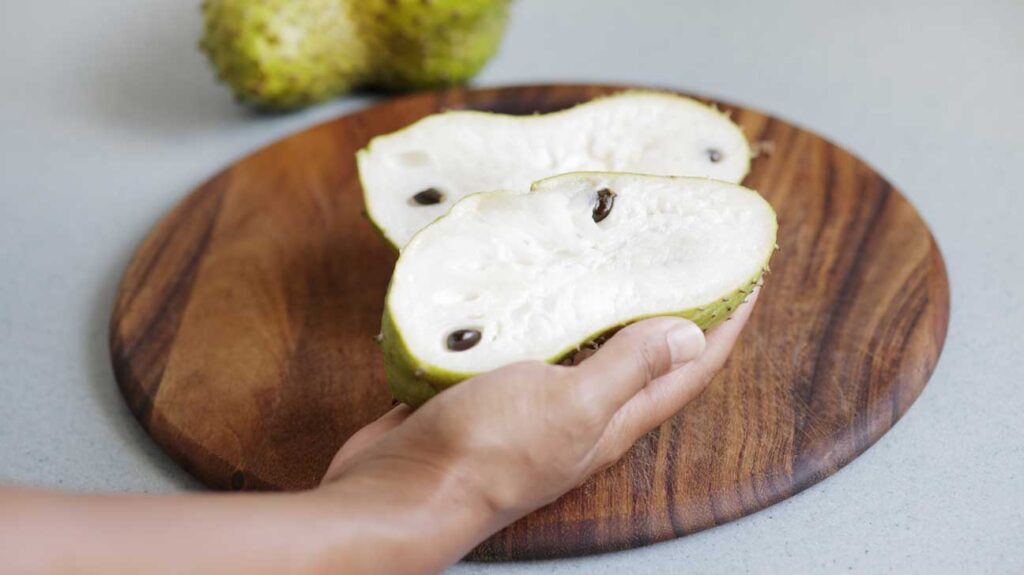
Both elote and esquites are maize snacks covered with mayonnaise, cheese, lime juice, chili powder, and salt. Elote refers to the corn on the cob kind, which is a favorite kid’s snack. Esquites are similar to corn on the cob, except they are served in a little cup from a hot metal kettle. It’s one of my all-time favorite munchies!
Hominy, meat (pork, chicken, beef, and more), shredded cabbage, radish, cilantro, and lime make up pozole, a thick stewed soup. Topping it off with a spicy salsa! Because regional variations vary, it’s difficult to label it “one” meal, but my suggestion is to taste each pozole and decide for yourself which is the finest. Doubtless check the soup contents for Maggi, but when I asked, the restauranteurs were shocked since it implied their broth wasn’t in its “natural” form. On a chilly day, this is a warming meal.
Sopa de lima: This acidic “lime soup” is a Yucatan speciality, but it’s also available elsewhere. It’s prepared with crispy fried tortilla strips (ensure they’re not made of flour), shredded cooked chicken, and veggies including chayote and carrots.
You’ve probably heard of guacamole. Avocado, lime, onions, and a grasshopper or two on occasion. It’s sometimes served with cheese on top. If you’re ordering guacamole with totopos as an appetizer, keep in mind that this will be the guacamole you’re accustomed to if you’re from North America. When eating tacos or other snacks, however, the guacamole is usually served in a squeezable dispenser and is more watery/blended.
Salsa rojo, hitomate, salsa picante, and salsa verde are just a few of the salsa varieties you’ll discover on this list, and since Mexico is such a large nation, there’s a lot of variation! Confirm that they are prepared from scratch with no seasoning condiments like Maggi, although they are generally safe if produced by the restaurant/vendor.
Salsas aren’t usually prepared for serving, but when they are, I photograph them.
Cochinita pibil is a delicious pulled pork dish that is stewed in achiote and spices for hours. Ask whether there’s any bread or wheat in it, although it’s usually made celiac-friendly. I can’t give it justice as well as Serious Eats, so I’ll quote them: “Authentic cochinita pibil is neither mild nor dry. True, it’s not spicy (the heat comes from the extremely hot sauces on the side), but bitter Seville oranges, achiote, roasted garlic, and a variety of other spices give it a distinct sweet, earthy fragrance. The floral fragrance of the banana leaves it’s cooked in, as well as smokiness from hours of slow simmering, add to the earthiness.” Isn’t that appealing? Go get some food.
Birria is a slow-cooked stew that is seasoned with chiles, herbs, and spices. It’s thick and meaty, and it’s traditionally prepared from goat or sheep. It’s typically gluten-free since it’s made from scratch. As with any beef meal, make sure there are no gluten-containing condiments.
Caldo de pollo, caldo de res: Caldo de pollo and caldo de res are chicken and beef soups, respectively. The chicken and beef soup broths are typically clear, unlike birria or some of the other meals, and are served with a large amount of vegetables and sometimes rice. Make sure there are no bouillon cubes in the base. Otherwise, this has become a go-to meal for me on a daily basis.
Barbacoa is a kind of cuisine that may be done using either lamb or goat. It’s full-bodied and delicious, with smokey undertones and a lingering avocado-leaf aroma. These recipes are gluten-free. Although the condiments will remain the same as before, traditional babacoa will be gluten-free.
Gluten-Free Drinks in Mexico, Including Mezcal
There is a lot more than what is stated here, but I wanted to highlight the following:
- Mezcal, tequila, and pulque are all agave-based alcoholic drinks with distinct flavors and production methods. They don’t utilize malt and are completely safe.
For celiac tourists, Mezcal from Oaxaca has many of gluten-free options.
- Ocho Reales Beer is also produced using hops, rice, and sorghum; gluten-free beer isn’t always healthy for celiacs, regardless of whether it reads “gluten free.” Instead, Ocho Reales starts with safe ingredients, resulting in a delicious and consistent beer.
- Agua frescas: These “fresh waters” are mildly flavored cold beverages with fruit and sugar that fall between between water and juice. My personal favorite is Jamaican agua fresca (hibiscus flower).
Gluten-Free Restaurants and All-Inclusive Resorts in Mexico
Because readers often ask for all-inclusive resorts, I’ve included an additional area here. As with the other guides, I will continue to update this area as new material becomes available.
Mexico’s Gluten-Free All-Inclusive Resorts

- Grand Velas is a chain of luxury resorts in Los Cabos, Riviera Maya, and Riviera Nayarit. Each resort offers a variety of restaurants, the majority of which have gluten-free options listed on the menu, as well as gluten-free room service. Visitors’ dietary requirements are entered into the resort’s computers upon arrival, according to the head chef at Grand Velas Riviera Maya, so that staff is immediately informed when guests give their room number. He also guarantees that gluten-free meals are prepared using separate equipment and utensils to prevent cross-contamination.
- The Iberostar properties in Mexico have a reputation for being very friendly to Celiacs. It is, however, essential to verify with each resort before making a reservation, and to double-check when you arrive. The translation cards come in helpful in this situation!
- Similarly, the Celiac-friendly Valentin Maya resort on the Riviera Maya is renowned for having gluten-free breads and sweets accessible in the dining rooms, as well as gluten-free meals prominently indicated on restaurant menus.
- The Karisma hotel and resort company provides an all-inclusive gourmet experience that accommodates a wide range of dietary requirements, including Celiac disease. Generations Riviera Maya Resort, El Dorado Spa Resorts, and Azul Beach Resort Sensatori are among their properties.
- Secrets Resorts are high-end adult-only resorts with sites in Baja California, Huatulco, and Puerto Vallarta, as well as in Cancun, the Riviera Maya, and Cozumel. Celiac visitors are welcome at any of the venues.
- While Sanará in Tulum Beach is not an all-inclusive resort, it is a luxury eco hotel with yoga, a wellness center, and The Real Coconut, a gluten- and dairy-free restaurant on site. Breakfast, lunch, and supper menus are available, as well as a beverages menu that includes herbal cocktails, fresh squeezed juices, and medicinal lattes.
- In May 2019, Seadust Cancun Family Resort implemented a new gluten-free cuisine across the resort. The resort’s eleven restaurants provide gluten-free Cancun menus. Gluten-free cereals, pancakes, pizzas, pastas, sandwiches, and gluten-free pineapple pie and apple pie are among the new breakfast, lunch, and supper options.
In Mexico, there are a number of stores that sell gluten-free products.
- The Green Corner is a higher-end supermarket with many locations in Mexico City that focuses on local and seasonal goods, as well as gluten-free and vegan options. Organic eateries are connected to the store’s locations in Coyoacán and Condesa.
- Chedraui is a gluten-free supermarket and department store company in Mexico, where I bought a lot of gluten-free products while I lived there. It offered everything from gluten-free pancake and waffle ingredients to sauces and more. Very sturdy products, however they’re frequently dispersed around the store by food/product category, rather being in a dedicated “gluten free” area.
- Superama is a Walmart-owned grocery chain that sells gluten-free goods and has locations across Mexico. Walmart shares this sentiment.
- KuidaT is a vegan and gluten-free company that produces breads, hamburger buns, cookies, pizzas, and cakes, among other things. They have an online shop where you may buy individual loaves of bread or boxes of donuts, as well as monthly box subscriptions. Their products are available in a variety of natural food shops across Mexico.
- In San Luis Potosi, Cuesco Fino Sabor Natural (fine, natural taste).
- San Angel, Mexico City’s Ecobutik.
- In their Mexico City shop, Distrito Foods offers gluten-free mole and other gluten-free flours.
- Tonari Gourmet Mercadera in Chihuahua.
- Metepec’s Almacén Orgánico
- Xiguela and La Miscelánea are two tiny stores in Oaxaca that offer gluten-free and organic items. Xiguela also has an online store.
Restaurants in Mexico City that are gluten-free
In addition to the pure corn- or rice-based Mexican cuisine mentioned above (the street food choices are not to be missed! ), the following restaurants in Mexico City offer gluten-free options:
- La Otilia is a gluten-free bakery in Mexico City that prioritizes healthy cuisine, well-trained employees, and even your four-legged friends (who receive special treats!). They provide a variety of cakes and pastries, as well as baguettes and buns, as well as a breakfast and lunch buffet.
- Pan Gabriel is an organic and gluten-free bakery in Mexico City’s Coyocán and Condesa neighborhoods. Vegan breads and pastries are available in a range of flavors.
- In addition to their fresh products, Zero Glutentaciones is a gluten-free bakery that caters to a range of dietary requirements and provides take-home pastas and bake mixes.
- Hadasa Gourmet in Mexico City not only makes gluten-free pastries, sandwiches, and other treats, but they can also cater parties and banquets at your house.
- Ojo De Agua is a lovely café that serves delicious breakfasts, including gluten-free, vegetarian, and vegan choices.
- Energua is another celiac-friendly bakery that is delighted to provide gluten-free sweets made using Mexican and international grains and gluten-free protein. Breads, cakes, pastas, marmalades, chutneys, biscuits, and much more are all included.
- Another gluten-free bakery in Mexico City, this time in San ngel, is Pan Filio. Cupcakes, bread, empanadas, cupcakes, and more are available.
- Gluten-free breads, nut butters, and other baked goods are available in Amsterdam Market. On their Origines Organicos website, you may find a list of their shops organized by region.
- Las Mamazotas Kitchen in Coyoacán has been recognized by AcelMex (the Mexican celiac organization) as safe for us to eat there. Cakes, croissants, sandwiches, and other baked products are available.
Matt from Wheatless Wanderlust offers a comprehensive celiac restaurant guide in Mexico City, while Becca and Dan from Halfhalf Travel have another Mexico City list here.
In Mexico, what isn’t gluten-free?
As I stated before, condiments like Maggi, Salsa Inglesa, and Knorr cubes/seasonings should be avoided. I became ill while eating homemade tacos where the meat was fried and seasoned with Salsa Inglesa. These are covered by the gluten-free Mexico restaurant card, which should keep you safe.
Furthermore, individuals may get glutened if they consume:
- oil that is tainted (frying products in the same oil as breaded products)
- tortillas made from a combination of maize and wheat (more common in the North, less so in Mexico City, Oaxaca, Puebla, and San Cris)
- mole sauces, particularly mole negro and coloradito, are used to flavor tamales.
- Rice may be prepared with bouillon cubes or flavored with the toppings listed above.
Tortas are a kind of sandwich. Everything is off bounds.
Pastel: Cake. Unless you go to a gluten-free bakery, it’s difficult to obtain gluten-free baked products here – even corn loaves include wheat flour.
Mole negro, mole rojo, mole coloradito, and sometimes mole amarillo are all prepared using breadcrumbs. (For additional information, see this post.)
My efforts at cooking mole tamales, including a gluten-free variation for my celiac stomach.
Chile relleno: Instead of using egg and wheat flour, some filled chile peppers are coated only in egg and cooked. It seems to be the exception rather than the norm, therefore you should avoid it.
If the base is prepared using Knorr or Maggi spices, the soup will be processed.
Tortillas de trigo (wheat tortillas), which are more frequently seen in northern Mexico and the Yucatan, and are used to make quesadillas and empanadas. Corn tortillas are the most common choice in Mexico’s southern and central regions.
Burritos: Wheat tortillas are nearly usually used in burritos. These aren’t as numerous as the others, although they do exist in certain areas of Mexico.
Some enchiladas: An enchilada is a maize tortilla wrapped around a meat or cheese filling and smothered with salsa. If the salsa, like other meals, is prepared with a thick mole sauce, it’s presumably thickened with bread and thus off-limits. Enchiladas made with rojo or verde salsa are generally safe.
Churros: I lament my lack of churros, which are fried dough sticks that are often dipped in chocolate and look wonderful. Regrettably, they’re made of wheat.
Panque de elote: Most sellers will tell you that their corn cakes are made entirely of corn, but I’ve yet to encounter one that doesn’t contain any wheat flour. It’s best to double-check with the establishment, although I’d advise cautious.
Michelada: This is a no-no since it contains beer and frequently Worcestershire sauce/Salsa Inglesa.
Cream-based soups: According to the second-round translator, a Mexican lady who is also celiac, cream-based soups in Mexico are often thickened with flour.
Salsa Inglesa — this is the generic term for Worcestershire sauce, which is produced in Mexico in certain cases. While not all Worcestershire sauces include wheat, nearly all in Mexico do — with the exception of Inglesita, a Guadalajara-based Worcestershire sauce that is gluten-free, aged in white oak barrels, and vegan. Inglesita is available at La Miscelánea in Oaxaca, but the sauce company’s Facebook page is very responsive, so you may contact them to inquire about its availability elsewhere in Mexico.
Inglesita Worcestershire sauce is a gluten-free and vegan artisanal sauce produced in Mexico. The photo is courtesy of Rebecca Rinke of La Miscelánea.
Because they were dousing the grilled meat with it, I became glutened during a taco binge. When ordering tacos, be sure to inquire about whether the meat was marinated or grilled. Yes, it’s off limits, according to my celiac card, since 99 percent of the Worcestershire sauces / salsa inglesas include gluten.
It costs approximately 550 Mexican Pesos (about $30 USD) to join the Mexican Celiac Association. Membership includes access to their mobile app, which includes a list of gluten-free restaurants that are suitable for Celiacs. I haven’t joined yet, but I thought I’d mention it!
More Mexico-related reading: cookbooks, guides, and more
For anyone planning a trip to Mexico, here are some excellent publications to help you learn more about the country and its cuisine before you go.
For Mexican cookbooks and food books, go to:
- I purchased Tacopedia and carried it to Mexico, captivated by its brightly colored cover and lighthearted tone. It’s not the most complete culinary book, but I found it helpful as a part guide, since it recommends booths where you may eat anything from tacos to tamales and more.
- Diana Kennedy’s The Essential Cuisines of Mexico combines three of her previous works on the nation into one handy reference. Diana writes brilliantly about the nation she loves, including traditional dishes from all across the country, including several I’ve never heard of.
- Eat Mexico is a love letter to Mexico City’s marketplaces and stalls, with enough dishes to keep you occupied in the kitchen for a long time. It’s only available in hardcover, but it’s well worth the wait since I enjoyed it not just for the recipes, but also for the tales and photographs that go with them.
- Lonely Planet’s From the Source line of culinary books includes a Mexico book with 60 dishes from all across the nation.
- Vegan Mexico: Soul Satisfying Regional Recipes from Tacos to Tostadas may be the book for you!
- Bricia Lopez and Javier Cabral’s book Oaxaca: Home Cooking from the Heart of Mexico, published in 2019, is obviously one I couldn’t pass up.
- The Mexican Home Kitchen: Traditional Home-Style Recipes That Capture the Flavors and Memories of Mexico, due out in 2024, will be an excellent companion to your culinary fantasies.
- And also from 2024: by Rachel Glueck & Noel Morales is a beautifully-illustrated anthropological cookbook called The Native Mexican Kitchen, focusing on indigenous cuisine.
We’ve got back to you again with another update to our handy guide to Mexico! The country has changed a lot over the past year, and there are now many more gluten-free eateries and gluten-free options available. We’ve got all the latest information right here.. Read more about gluten free mexican food recipes and let us know what you think.

